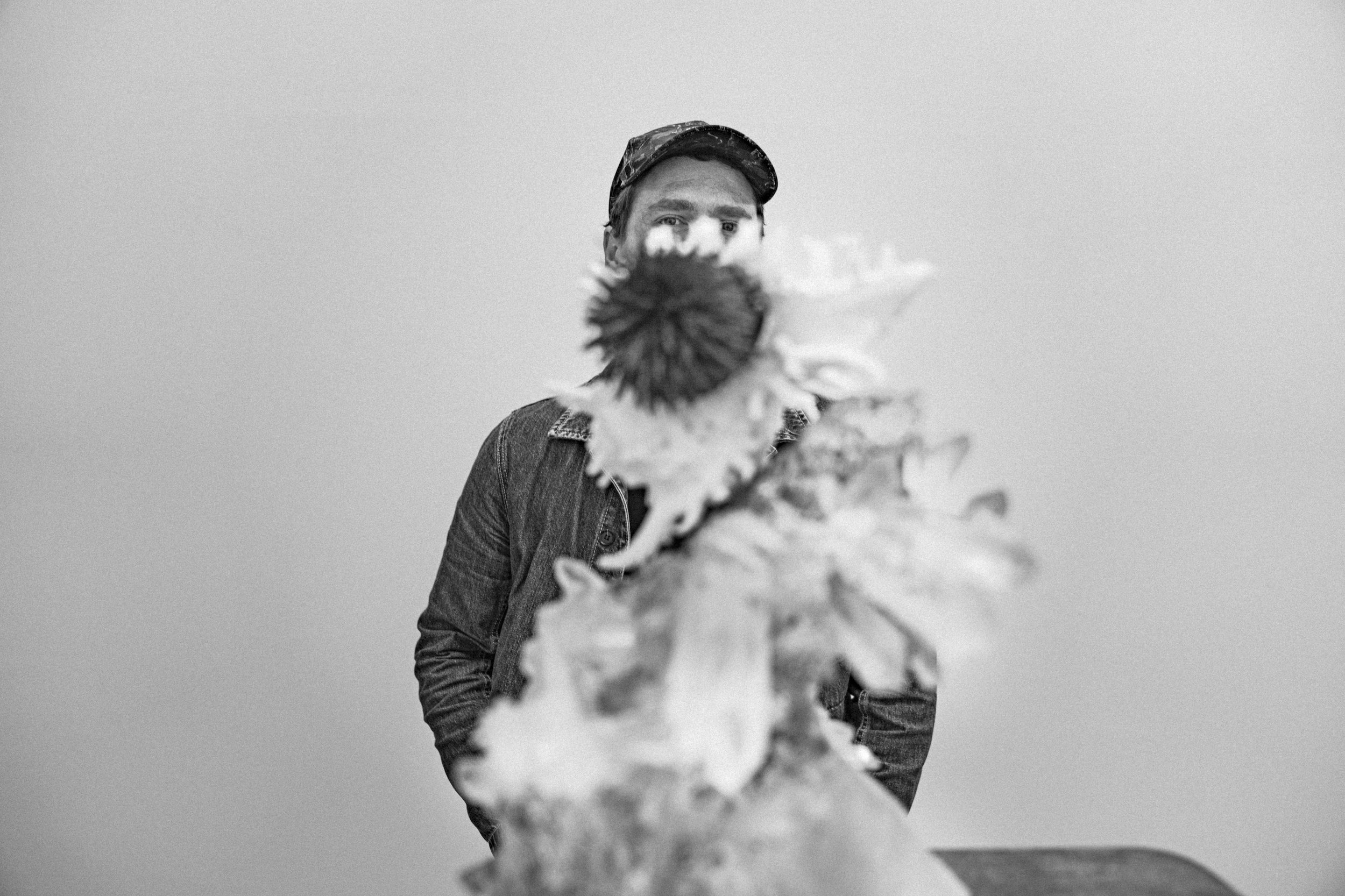“When does one thing become another?”
Zac Langdon-Pole on the malleability of history, chimeras and hybrids — on the occasion of his recently exhibited work Chimera, included in this year’s Sculpture on the Gulf.
Zac Langdon-Pole. Photo: Stephen Langdon
Zac Langdon-Pole, Chimera, 2024. Installation view, Perpetual Guardian Sculpture on the Gulf, Waiheke Island, March 2024. Photo: Peter Rees. Courtesy of the artist and Michael Lett
Your sculpture takes inspiration from an episode in the period known to palaeontologists as the ‘Bone Wars’ involving mismatched and mislabelled dinosaur skeletons. Can you recount this story and what about it interested you?
The work revolves around how the world came to know one of the most iconic dinosaurs, the Brontosaurus. The so-called ‘Bone Wars’ of the 19th century were like a gold rush to discover, name and collect dinosaur bones. The short of it is that the head of one dinosaur (a Camarasaurus) was mistakenly put on the body of another (an Apatosaurus). While palaeontologists were quick to identify the error, because it was the first full dinosaur skeleton to be put on display in a museum it cemented its place in the popular imagination as real. So real that one hundred years later I grew up being taught that it was a dinosaur at school.
To me it’s a beautiful parable of how malleable history and reality can be. The Brontosaurus as a fallible puzzle-like-assemblage is a perfect analogy for ourselves. If we are our memories, and these memories are constantly being edited and reshaped by new experiences, doesn’t that make identity a process rather than a finite thing? I love that the Brontosaurus has one foot in fact and one foot in fiction. Much like a Brontosaurus we are both a real and imagined entities built on the fissures of different things coming together.
Chimera reminds me of Sid’s mutant toys in Toy Story (1995). This is maybe a silly reference, but it also made me think about the work in terms of horror, in Noël Carrol’s sense, as being about the “threatening and impure”. Robert Leonard has previously described your work as exemplary of the surrealist ‘marvellous’, which seems like quite a different affect, so I’m curious how the invocation of horror sits for you?
I actually love that reference, a dear friend also pointed that out when I was developing the work, which led me to re-watch the film. That particular scene in Sid’s room is brilliant, because those mutant toys turn out to be far richer in character and allude to a far more complex owner of the toys (Sid) than Woody and Buzz’s owner (Andy). Uncannily enough there’s a moment where on encountering the hybrid toys, Woody and Buzz assume they are cannibals because, according to where they come from (they are more classic readymades from the toy store), these creatures look different. I mean isn’t that a deft portrayal of encounters within colonial history?
I guess what I’m drawn to about the monstrous as a concept is that it is a projection. Like how Peter Mason defines the exotic, a monster is not a monster until someone deems it so. It isn’t a pre-existing fact until your encounter with it. To me, I find it all really quite beautiful, so maybe there’s something about how the monstrous can contain the beautiful and the beautiful can contain the monstrous.
Zac Langdon-Pole, Chimera(detail), 2024. Installation view, Perpetual Guardian Sculpture on the Gulf, Waiheke Island, March 2024. Photo: Peter Rees. Courtesy of the artist and Michael Lett
Previous bodies of your work have examined ideas of passage—following bird migration routes and objects of colonial trade for example—and the ways these things have mapped knowledge (sometimes erroneously) and power (mostly unevenly). Chimera seems more interested in lines and logics of descent/ascent than those of flight. Was this question of orientation something you thought about when developing the work?
One of the questions that guided previous bodies of work was a question of belonging. Namely, what belongs where? This was a useful tool to unpack how we order the world; how do we apprehend what we see and place it rightly or wrongly into a system of thought or worldview? That question is still there with Chimera but it also incorporates a new question: when does one thing become another?
The work itself is formally hinged between two readings, the position of the skull obviously makes the piece read as one hybrid ‘monster’, albeit a glaringly wrong or incongruous one. But secondly the crane is actually just doing what a crane does: lifting the skull into place. So the work quite literally is performing this moment in which any possible body may be about to be added. I like that it fizzes with potential, it’s a monument to becoming. If there’s one major ethic to my work it would be that I want to underline how the world is constituted not by definite things, but by numerous processes.
In terms of the logic of ascension/descension you could say the piece is a collage of two quite different timeframes. The Camarasaurus skull is from the deep history of the Earth, found buried below ground and now raised to the sky. The spider-crane is more obviously from our time. Cranes dominate our skylines, building upwards and feature on the top of buildings which seem to me to be emblems of human civilisation’s so-called progress. The crane however is powered by petrol, which is a substance derived from once living fossils buried in the Earth’s history. So I guess everything is connected. In terms of orientation I’d say the work is about both looking back and looking forward at the same time, like a Janus head or Paul Klee’s Angel of History.
Zac Langdon-Pole, Chimera, 2024. Installation view, Perpetual Guardian Sculpture on the Gulf, Waiheke Island, March 2024. Photo: Peter Rees. Courtesy of the artist and Michael Lett







